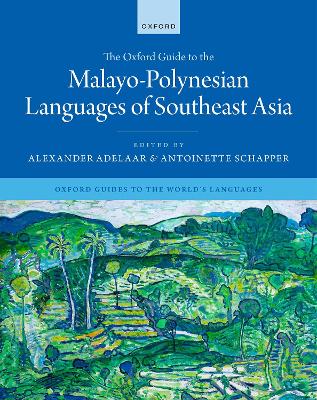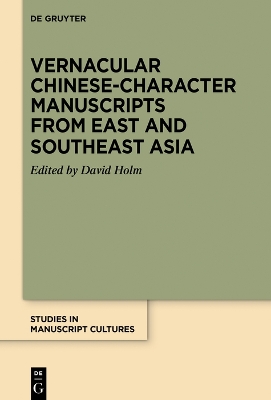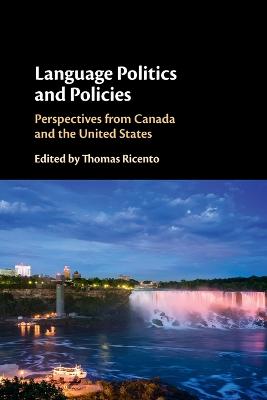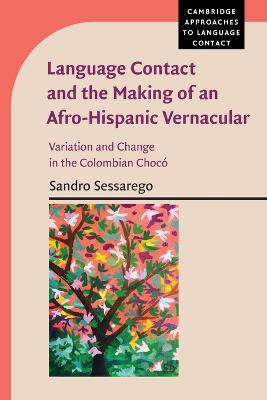Language Variation and Language Change Across the Lifespan
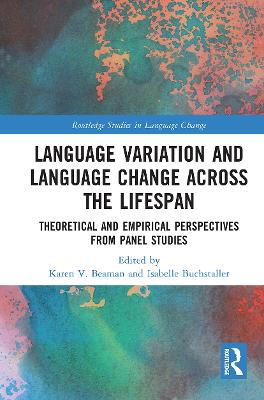 portes grátis
portes grátis
Language Variation and Language Change Across the Lifespan
Theoretical and Empirical Perspectives from Panel Studies
Buchstaller, Isabelle; Beaman, Karen V.
Taylor & Francis Ltd
03/2021
286
Dura
Inglês
9780367141219
15 a 20 dias
453
Descrição não disponível.
List of Figures
List of Tables
List of Contributors
Acknowledgements
Panel studies of language variation and change: Theoretical and methodological implications
PART I: REVELATIONS FROM PAST TREND AND PANEL STUDIES
Chapter 1.
The beginnings of panel research: Individual language variation, change and stability in Eskilstuna
Chapter 2.
Alignment of individuals with community trends: Subjects from the Portuguese
Chapter 3.
Stylistic Variation in Panel Studies of Language Change: Challenge and Opportunity
PART II: INSIGHTS IN THE ANALYSIS OF INTRA-SPEAKER (IN)STABILITY
Chapter 4.
Individual and group trajectories across adulthood in a sample of Utah English speakers
Chapter 5.
Accent reversion in older adults: evidence from the Queen's Christmas broadcasts
PART III: A GLIMPSE OF THE PAST: PANEL RESEARCH FROM ARCHIVAL MATERIAL
Chapter 6.
Exploiting convention: Lifespan change and generational incrementation in the development of cleft constructions
Chapter 7.
Corpus-based lifespan change in Late Middle English
PART IV: NEW METHODOLOGICAL APPROACHES FOR LIFESPAN STUDIES
Chapter 8.
Exploring the effect of linguistic architecture and heuristic method in panel analysis
Chapter 9.
Loss of historical phonetic contrast across the lifespan: Articulatory, lexical, and social effects on sound change in Swabian
Chapter 10.
Deconfounding the effects of competition and attrition on dialect across the lifespan: A panel study of Swabian
PART V: FUTURE DIRECTIONS FOR PANEL RESERACH
Chapter 11.
What's the point of panel studies?
Index
List of Tables
List of Contributors
Acknowledgements
Panel studies of language variation and change: Theoretical and methodological implications
PART I: REVELATIONS FROM PAST TREND AND PANEL STUDIES
Chapter 1.
The beginnings of panel research: Individual language variation, change and stability in Eskilstuna
Chapter 2.
Alignment of individuals with community trends: Subjects from the Portuguese
Chapter 3.
Stylistic Variation in Panel Studies of Language Change: Challenge and Opportunity
PART II: INSIGHTS IN THE ANALYSIS OF INTRA-SPEAKER (IN)STABILITY
Chapter 4.
Individual and group trajectories across adulthood in a sample of Utah English speakers
Chapter 5.
Accent reversion in older adults: evidence from the Queen's Christmas broadcasts
PART III: A GLIMPSE OF THE PAST: PANEL RESEARCH FROM ARCHIVAL MATERIAL
Chapter 6.
Exploiting convention: Lifespan change and generational incrementation in the development of cleft constructions
Chapter 7.
Corpus-based lifespan change in Late Middle English
PART IV: NEW METHODOLOGICAL APPROACHES FOR LIFESPAN STUDIES
Chapter 8.
Exploring the effect of linguistic architecture and heuristic method in panel analysis
Chapter 9.
Loss of historical phonetic contrast across the lifespan: Articulatory, lexical, and social effects on sound change in Swabian
Chapter 10.
Deconfounding the effects of competition and attrition on dialect across the lifespan: A panel study of Swabian
PART V: FUTURE DIRECTIONS FOR PANEL RESERACH
Chapter 11.
What's the point of panel studies?
Index
Este título pertence ao(s) assunto(s) indicados(s). Para ver outros títulos clique no assunto desejado.
Karen Beaman;Isabelle Buchstaller;sociophonetics;variationist sociolinguistics;historical linguistics;dialectology;cognitive linguistics;retrograde movement;life-span change;frequency effects in intra-speaker stability;architecture in life-span change;mobility in life-span change;intra-speaker variability;language variation and change;panel studies;John III;Language variation;William III;Panel tudies;Lifespan Change;Post-adolescent speaker;Socio-cognitive Factors;Lifespan-specific effects;Discourse Context Analysis;Apparent Time Construct;Critical Age Hypothesis;Accusative Clitic;Apparent Time Analysis;Informative Presupposition;Foxy Boston;Null Subjects;Quadratic Term Age;GAMM;Retrograde Change;Lexical Frequency;Panel Study;Vowel Space;Panel Speakers;Linguistic Malleability;Speaker Grammar;Quantitative Sociolinguistics;Standard Language Forms;Sound Change;Null Object
List of Figures
List of Tables
List of Contributors
Acknowledgements
Panel studies of language variation and change: Theoretical and methodological implications
PART I: REVELATIONS FROM PAST TREND AND PANEL STUDIES
Chapter 1.
The beginnings of panel research: Individual language variation, change and stability in Eskilstuna
Chapter 2.
Alignment of individuals with community trends: Subjects from the Portuguese
Chapter 3.
Stylistic Variation in Panel Studies of Language Change: Challenge and Opportunity
PART II: INSIGHTS IN THE ANALYSIS OF INTRA-SPEAKER (IN)STABILITY
Chapter 4.
Individual and group trajectories across adulthood in a sample of Utah English speakers
Chapter 5.
Accent reversion in older adults: evidence from the Queen's Christmas broadcasts
PART III: A GLIMPSE OF THE PAST: PANEL RESEARCH FROM ARCHIVAL MATERIAL
Chapter 6.
Exploiting convention: Lifespan change and generational incrementation in the development of cleft constructions
Chapter 7.
Corpus-based lifespan change in Late Middle English
PART IV: NEW METHODOLOGICAL APPROACHES FOR LIFESPAN STUDIES
Chapter 8.
Exploring the effect of linguistic architecture and heuristic method in panel analysis
Chapter 9.
Loss of historical phonetic contrast across the lifespan: Articulatory, lexical, and social effects on sound change in Swabian
Chapter 10.
Deconfounding the effects of competition and attrition on dialect across the lifespan: A panel study of Swabian
PART V: FUTURE DIRECTIONS FOR PANEL RESERACH
Chapter 11.
What's the point of panel studies?
Index
List of Tables
List of Contributors
Acknowledgements
Panel studies of language variation and change: Theoretical and methodological implications
PART I: REVELATIONS FROM PAST TREND AND PANEL STUDIES
Chapter 1.
The beginnings of panel research: Individual language variation, change and stability in Eskilstuna
Chapter 2.
Alignment of individuals with community trends: Subjects from the Portuguese
Chapter 3.
Stylistic Variation in Panel Studies of Language Change: Challenge and Opportunity
PART II: INSIGHTS IN THE ANALYSIS OF INTRA-SPEAKER (IN)STABILITY
Chapter 4.
Individual and group trajectories across adulthood in a sample of Utah English speakers
Chapter 5.
Accent reversion in older adults: evidence from the Queen's Christmas broadcasts
PART III: A GLIMPSE OF THE PAST: PANEL RESEARCH FROM ARCHIVAL MATERIAL
Chapter 6.
Exploiting convention: Lifespan change and generational incrementation in the development of cleft constructions
Chapter 7.
Corpus-based lifespan change in Late Middle English
PART IV: NEW METHODOLOGICAL APPROACHES FOR LIFESPAN STUDIES
Chapter 8.
Exploring the effect of linguistic architecture and heuristic method in panel analysis
Chapter 9.
Loss of historical phonetic contrast across the lifespan: Articulatory, lexical, and social effects on sound change in Swabian
Chapter 10.
Deconfounding the effects of competition and attrition on dialect across the lifespan: A panel study of Swabian
PART V: FUTURE DIRECTIONS FOR PANEL RESERACH
Chapter 11.
What's the point of panel studies?
Index
Este título pertence ao(s) assunto(s) indicados(s). Para ver outros títulos clique no assunto desejado.
Karen Beaman;Isabelle Buchstaller;sociophonetics;variationist sociolinguistics;historical linguistics;dialectology;cognitive linguistics;retrograde movement;life-span change;frequency effects in intra-speaker stability;architecture in life-span change;mobility in life-span change;intra-speaker variability;language variation and change;panel studies;John III;Language variation;William III;Panel tudies;Lifespan Change;Post-adolescent speaker;Socio-cognitive Factors;Lifespan-specific effects;Discourse Context Analysis;Apparent Time Construct;Critical Age Hypothesis;Accusative Clitic;Apparent Time Analysis;Informative Presupposition;Foxy Boston;Null Subjects;Quadratic Term Age;GAMM;Retrograde Change;Lexical Frequency;Panel Study;Vowel Space;Panel Speakers;Linguistic Malleability;Speaker Grammar;Quantitative Sociolinguistics;Standard Language Forms;Sound Change;Null Object


